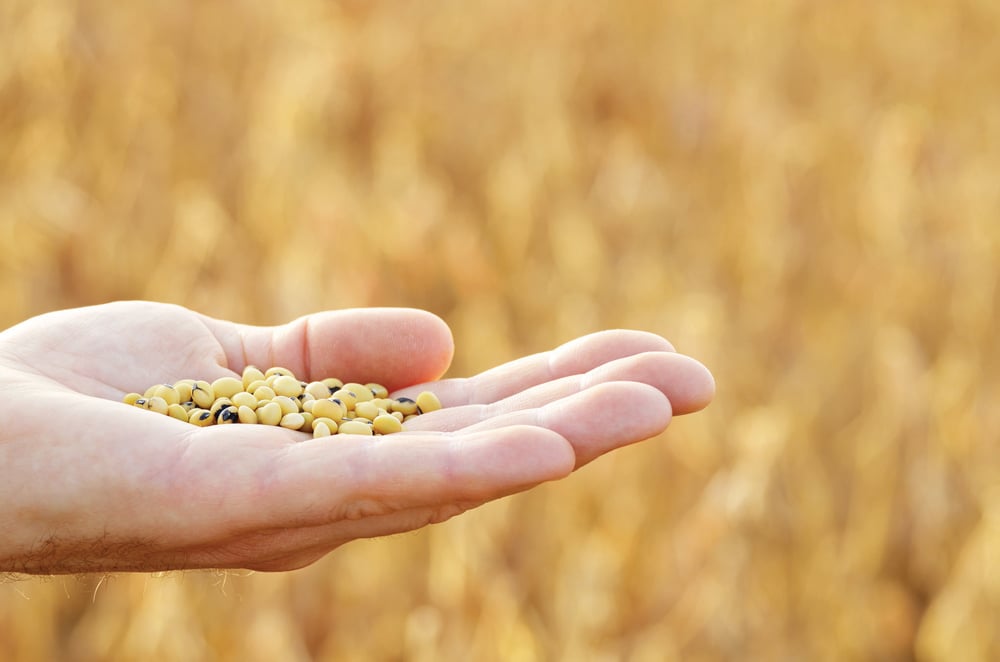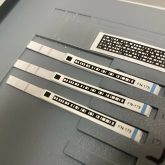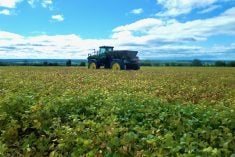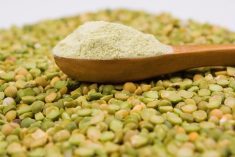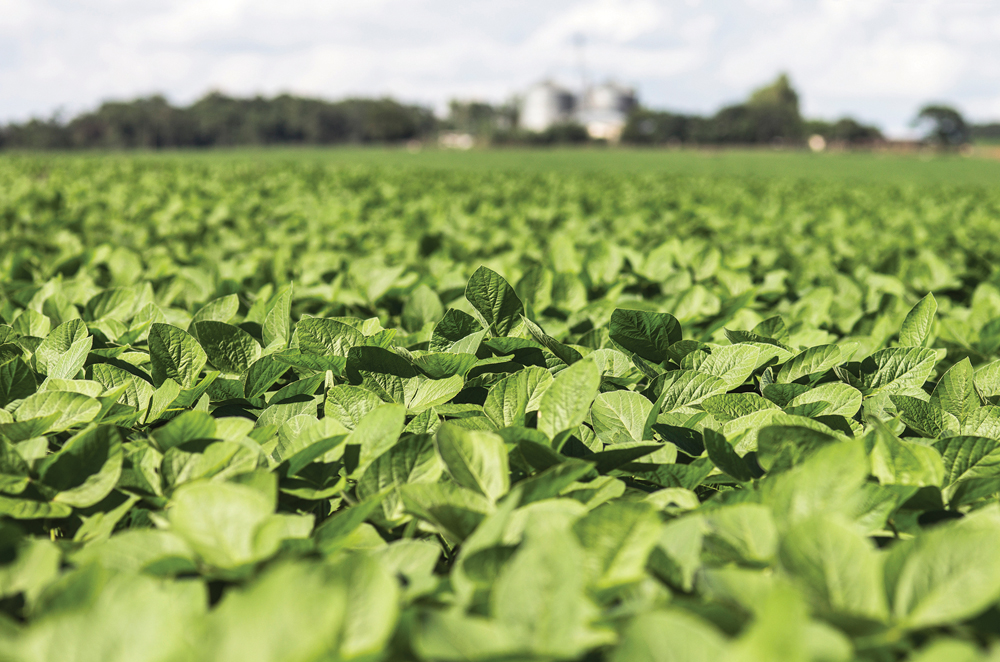Like many grain farmers across Western Canada, pulse and soybean growers had a tough 2018 from a weather standpoint. Many began the 2018 season seeding into soils with below-average soil moisture, then struggled with hot, dry weather throughout the season. That had a significant impact on yields. To top it all off, a number of growers had frost early in September, which also affected yields in some area.
Although dry conditions were beneficial in terms of diseases like stem and root rots which require cool, moist conditions, they did cause some production challenges, like poor seed quality soybean issues, poor seed survivability and poor nodulation. In this article we look at these and other issues that can be exacerbated in pulses by dry conditions and get some advice from an expert on what growers might want to consider if another dry season could be on the way.
Read Also

Claas brings 1000 Series SP forage harvesters to Canada
In mid-August, Claas unveiled its new line of Jaguar forage harvesters at an event in Visalia, California, deep in the heart of that state’s dairy region.
Green Seed
A big — and uncommon — issue for many Prairie soybean growers this year, especially in the dry areas of Manitoba, was green seed. “It sounded like some farmers had as high as 30 per cent green seed in their samples, which is well above the Canadian Grain Commission damage level that results in downgrading,” says Cassandra Tkachuk, production specialist with the Manitoba Pulse & Soybean Growers (MPSG). “It’s not an issue that we see a lot. We were turning to OMAFRA (Ontario Ministry of Agriculture, Food and Rural Affairs) for advice on this because this is something that they dealt with years ago. So it’s not a very common thing, but something that farmers can learn from in 2018.”
Green soybean seeds can be caused by dry conditions during July and August, which prevent the enzyme chlorophyllase from degrading the chlorophyll in the seed, which is the process that normally allows for the seed to change colour. This extra chlorophyll in the seed impacts oil quality and content and can lead to downgrading and discounting depending on the percentage of green seeds present in samples. “It’s hard to know the exact answer to when the green seed happened, but it’s sometime earlier on during seed formation and pod fill when the seed can shut down and lock in the green colour,” says Tkachuk.
To identify green seed, growers need to cut seeds open crosswise to determine if they have a green seed problem. There are two types of green soybean seeds: The first have a slightly green hull (outside) and yellow cotyledons (inside the seed). They are designated as No. 2 Canada and won’t be discounted. The second type are green throughout the whole soybean and are subject to downgrading.
It’s also not always easy to tell the difference between immature seed and actual green seed. Growers should only harvest areas of the field that are ready and come back later for the rest because if puffy yellow or green seeds are present in the combine, they may simply be harvesting the crop too early.
What to do about green seed?
There isn’t much that soybean growers can do about green seed. Leaving the soybean to stand longer in the field won’t improve the situation much. The enzymatic activity inside the dry seed in minimal, so although the discolouration may improve a little on the outside of the bean, the inside will remain green.
Storage doesn’t improve green seed issues either. A study of five different soybean varieties by OMAF showed that there was very little improvement in green seed after five months of storage.
If growers want to reuse these green soybeans as seed the following year, studies have shown that the average decrease in germination is around 19 per cent. The vigour rating of the green seed — which is a better predictor of stand establishment — was drastically reduced, by an average of 38 per cent, in samples tested by OMAFRA in 2002.
“If the seedlot in question has only a small percentage of green beans (five to 10 per cent) a drop in both germination and vigour of that small percentage will have little effect on the overall quality of the whole seedlot,” says Horst Bohner, a soybean specialist with OMAFRA in a 2003 article. “If the seed is certified the seed company has run quality tests. But if the seed in question is bin run and has a high percentage of green beans (30 to 60 per cent) it is well worth doing a germination and vigour test for the relatively low lab costs involved. Remember every good crop starts with good seed.”
If growers suspect a green seed issue, they should take a sample of their beans to buyers before hauling them and consider sending a sample to the Canadian Grain Commission (CGC) for a second opinion, because basing quality on colour alone can be subjective.
The Canadian Grain Commission will also shortly upgrade the pictures on its website to show in greater detail how bad green seed has to be for a discount to occur.
Although there isn’t much that growers can do to avoid green seed in soybeans in the future because the issue is weather related, Bohner says the best defence is a good crop rotation and choosing the best suited varieties for a grower’s area.
Early Fall Frost
After an early frost on September 5 in some areas of Manitoba, some soybean growers reported a significant impact on yield and quality, which is highly dependent on the maturity level of the plants. MPSG has a chart on its website showing the potential yield loss through frost in terms of plant maturity stage. As an example, frost at the R6 (full seed) stage can cause up to 50 per cent yield loss, whereas frost during the R7 to R8 stages are relatively safe from yield loss.
Factors that influence the severity of frost damage include the duration of the cool temperatures, soil moisture (which can retain heat), canopy thickness (narrower rows hold better heat than wide rows), wind speed (a stronger wind is better) and night time cloud cover (more is better).
Dry conditions at seeding
Dry conditions at seeding can also reduce germination and plant stands, which hurts yield potential from the get go. “Having a well-established stand is so important,” says Tkachuk. “If we are dealing with another dry spring in the future, growers should account for lower survivability of seed, because having a lower plant stand can impact the crop’s competitive ability against weeds and overall yield potential.”
Although, especially with soybeans that have a high seed cost, some growers might consider reducing seeding rates, Tkachuk advises growers to increase rates in a dry year to compensate for low survivability. “When you are expecting your crop to be stressed out or not establish as well, we recommend 140,000-160,000 soybean plants per acre of established plants and whatever amount of seed you need to put in the ground to get to that is what growers need to do,” she says. “Even in a good moisture year, you could have 20 per cent mortality, but it’s important to know or anticipate what your survivability might be.”
Tkachuk recommends growers keep detailed records of plant counts each year on all their pulse crops and relate that back to the seeding rate they used, which can vary among fields or seed lots. “They can refer back to that information and use it for future estimations, which in turn saves money,” she says.
Lack of moisture affects nodulation
All pulses nodulate to fix their own nitrogen, and in soybeans, especially in areas where soybeans are a relatively new crop, growers need to inoculate the seed with the rhizobium bacteria that isn’t found naturally and hasn’t yet had the opportunity to build in prairie soils.
Nodulation takes a lot of energy and if the plant is already stressed from lack of moisture, it may not be able to nodulate properly and may actually run out of nitrogen before the end of the season. “You could also have inoculant failure with lack of moisture,” says Tkachuk. “The product is good but the dry conditions are just not conducive to bacterial survivability in the soil.”
Growers need to keep an eye on their crops, says Tkachuk, because they can look beautiful in the middle of the summer and still have no nodules.
MPSG’s Soybean Development Guide provides a timeline of what to scout for and when. It is possible to apply a rescue application of nitrogen in-season, but a Manitoba study shows that it needs to be applied at the R3 or R4 (pod filling) stage to increase yield.


